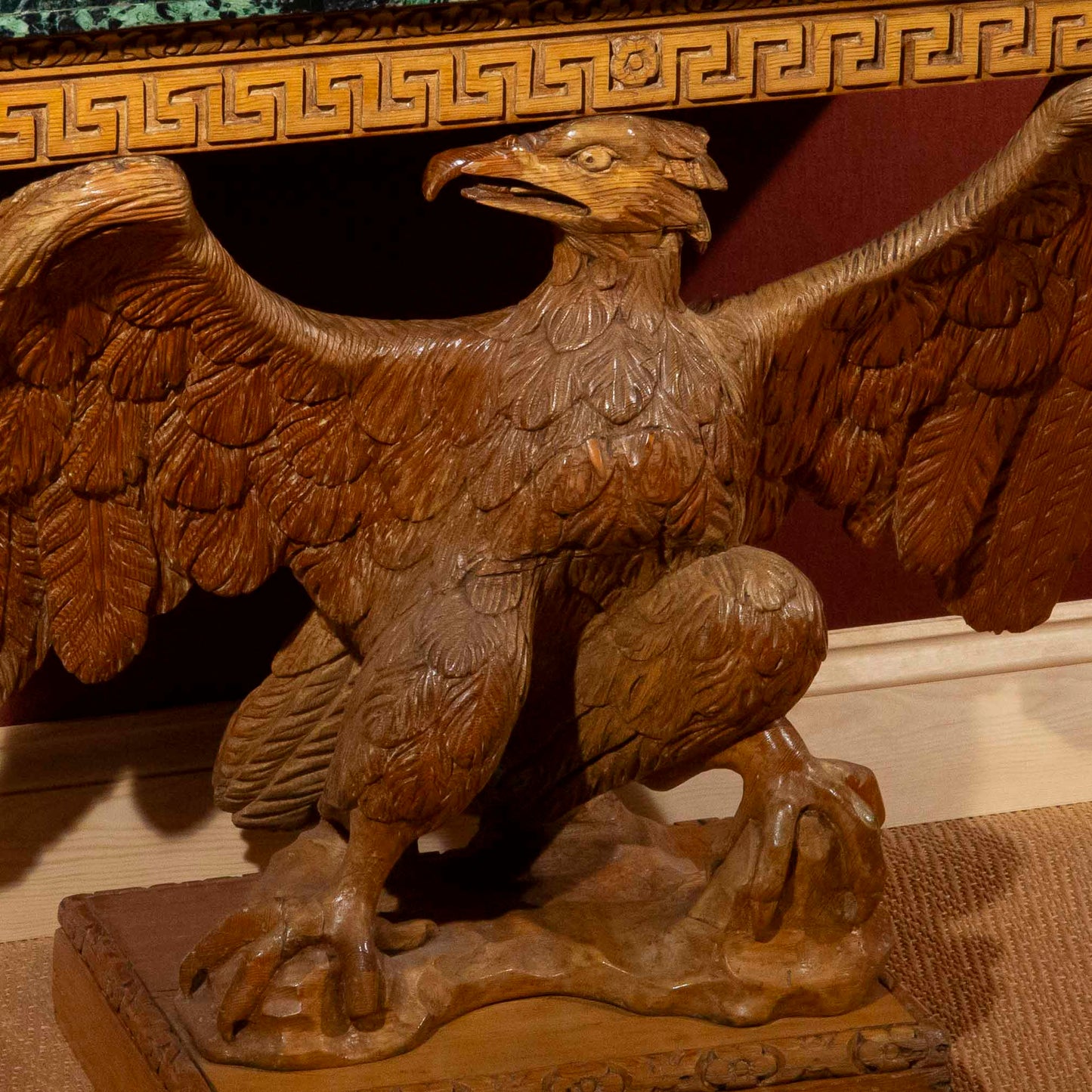
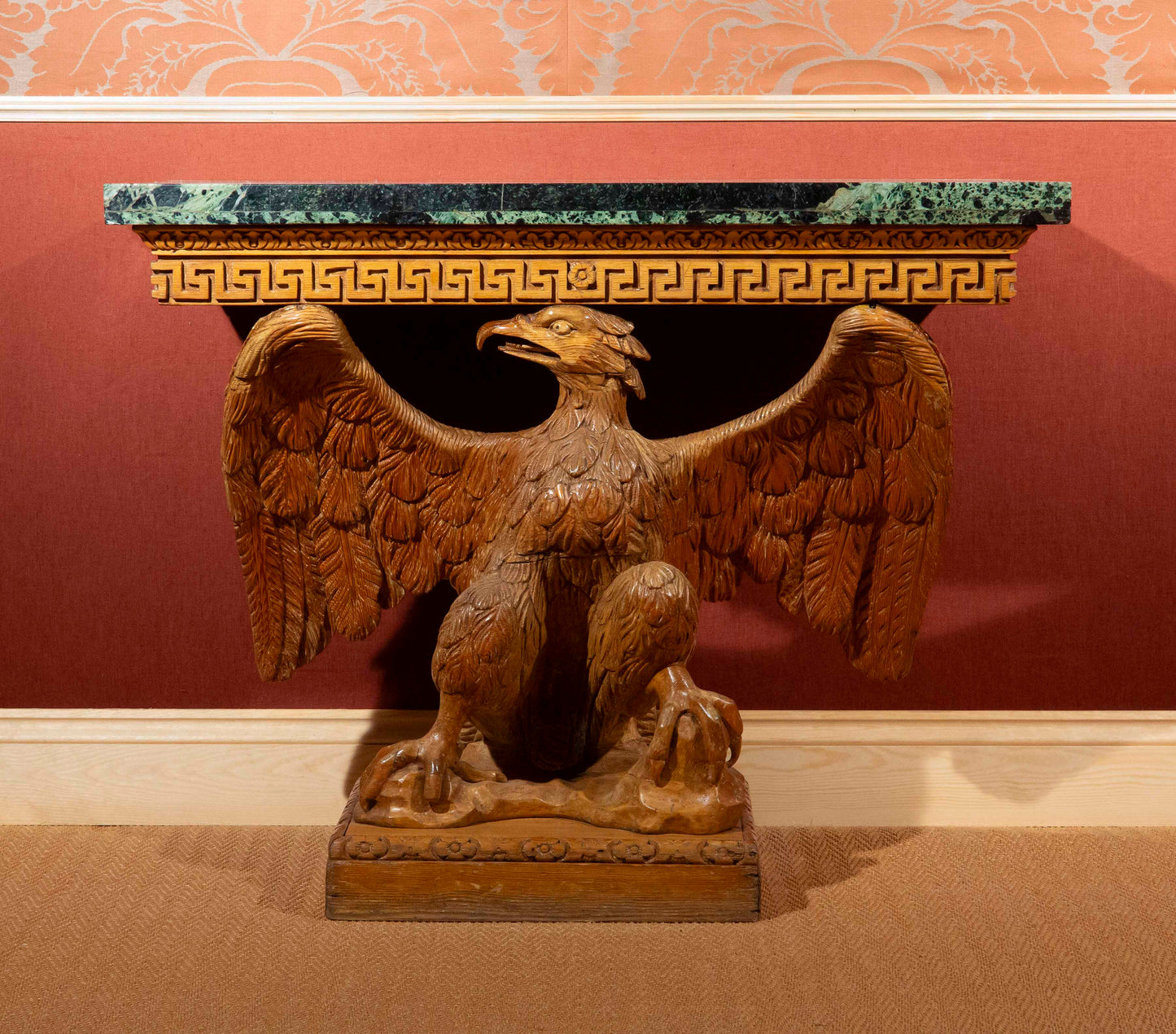
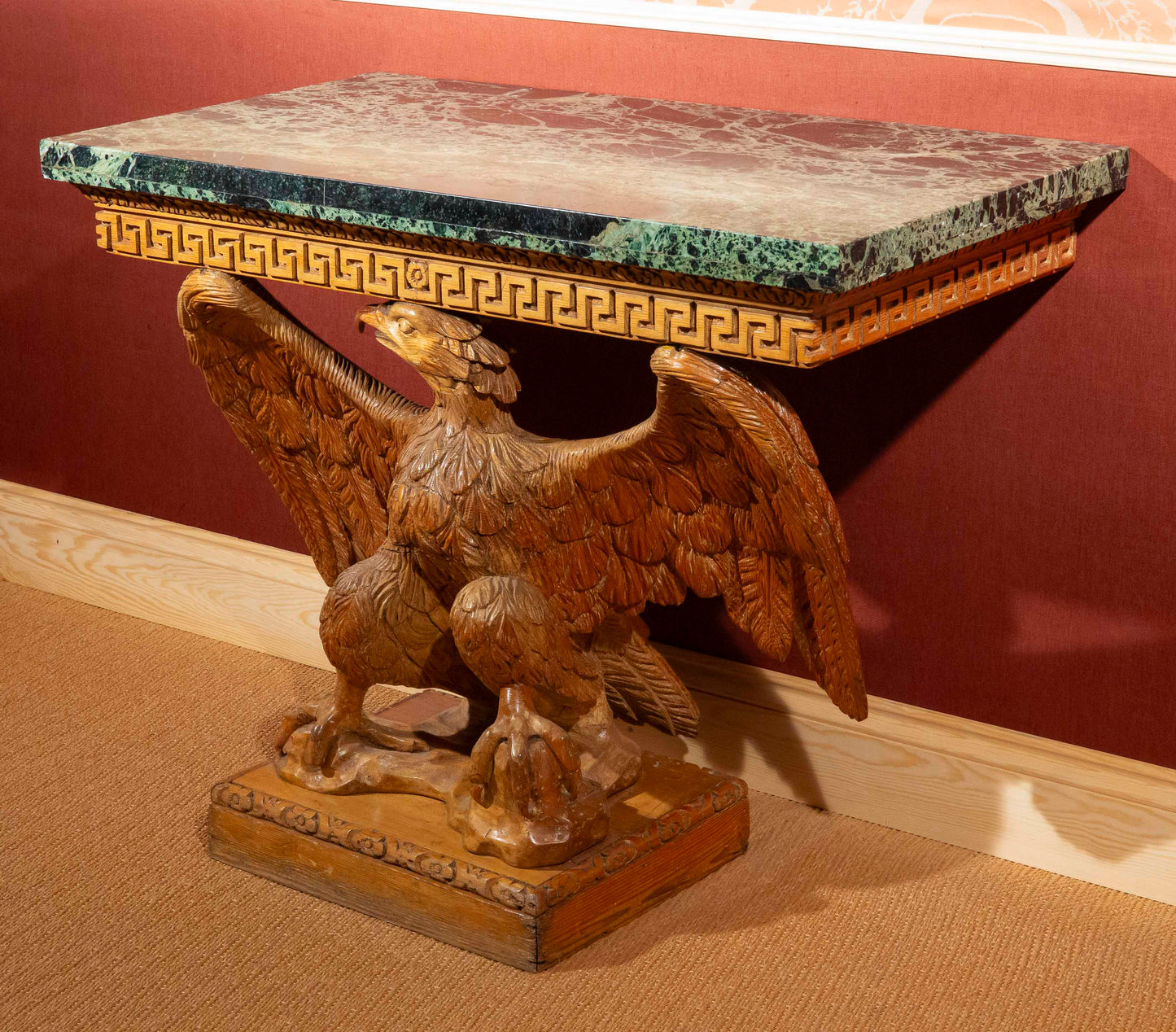

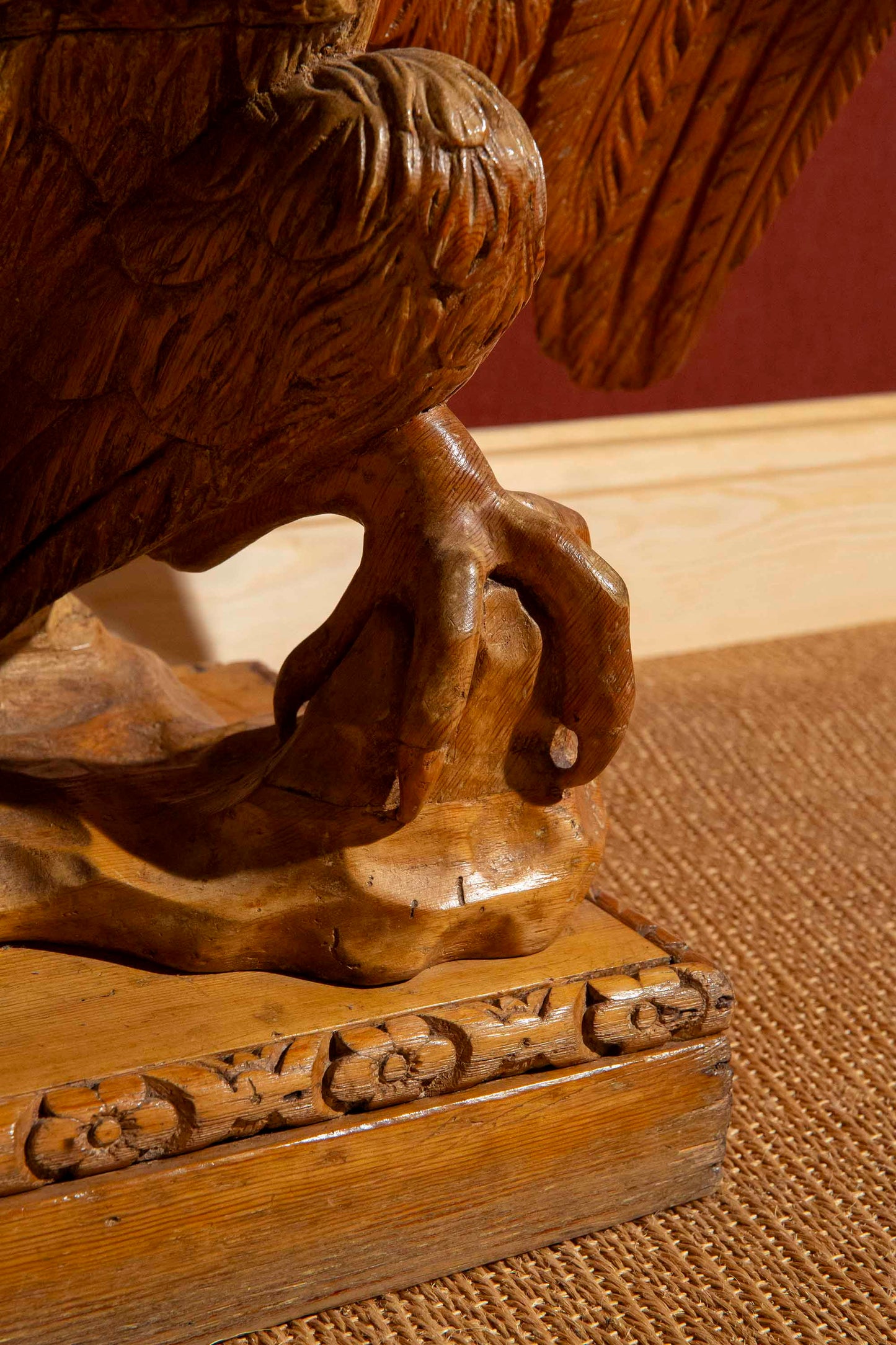
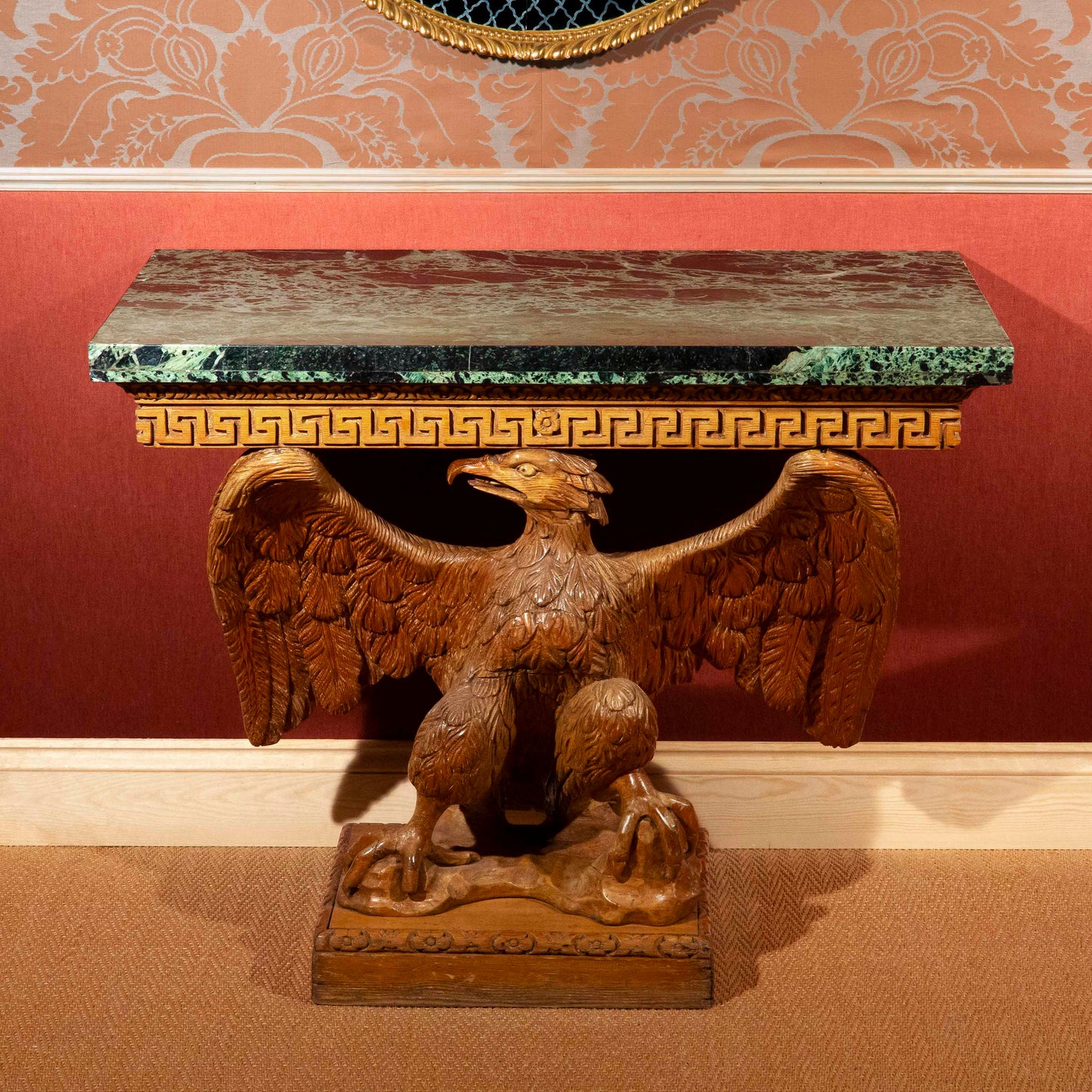
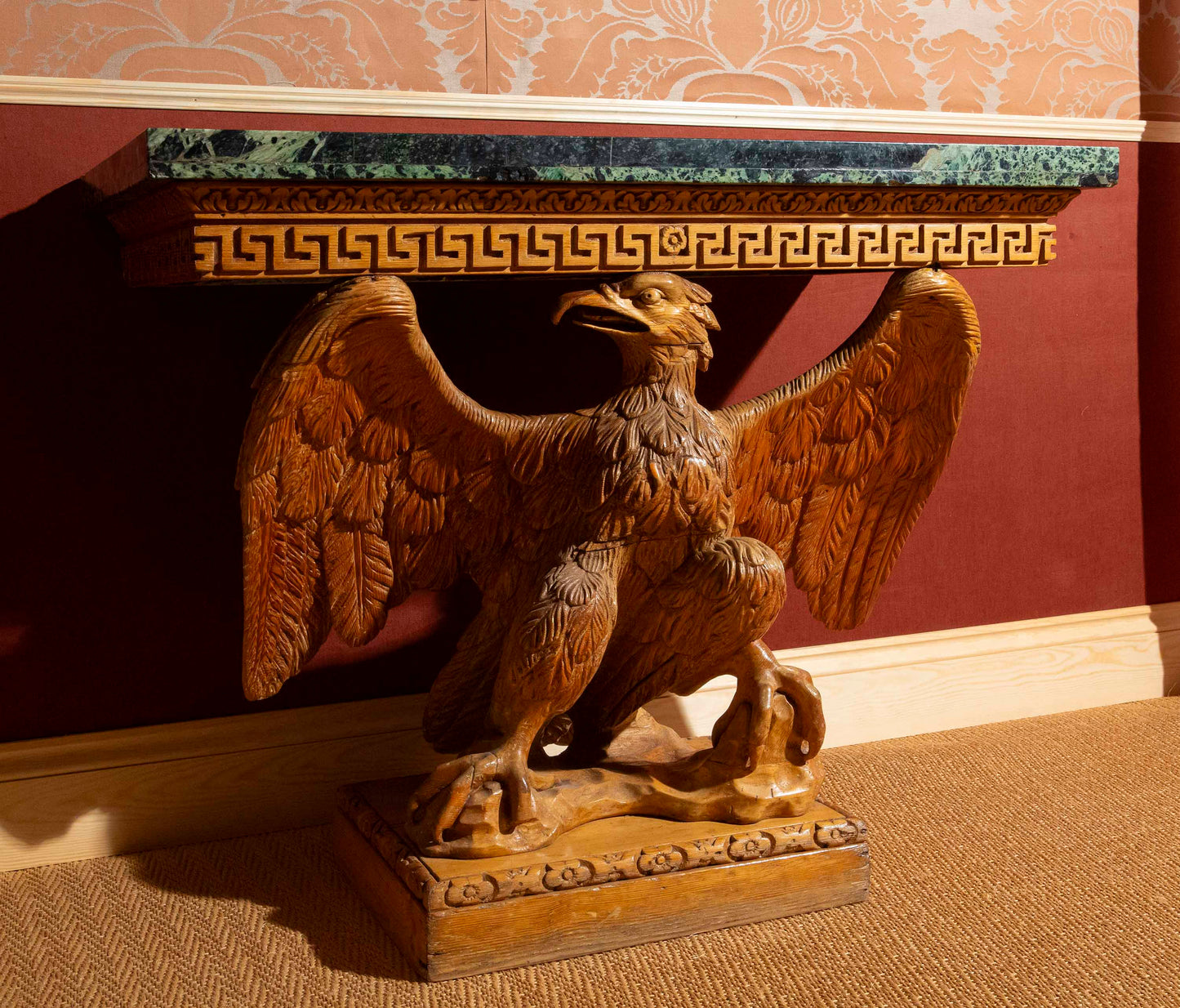
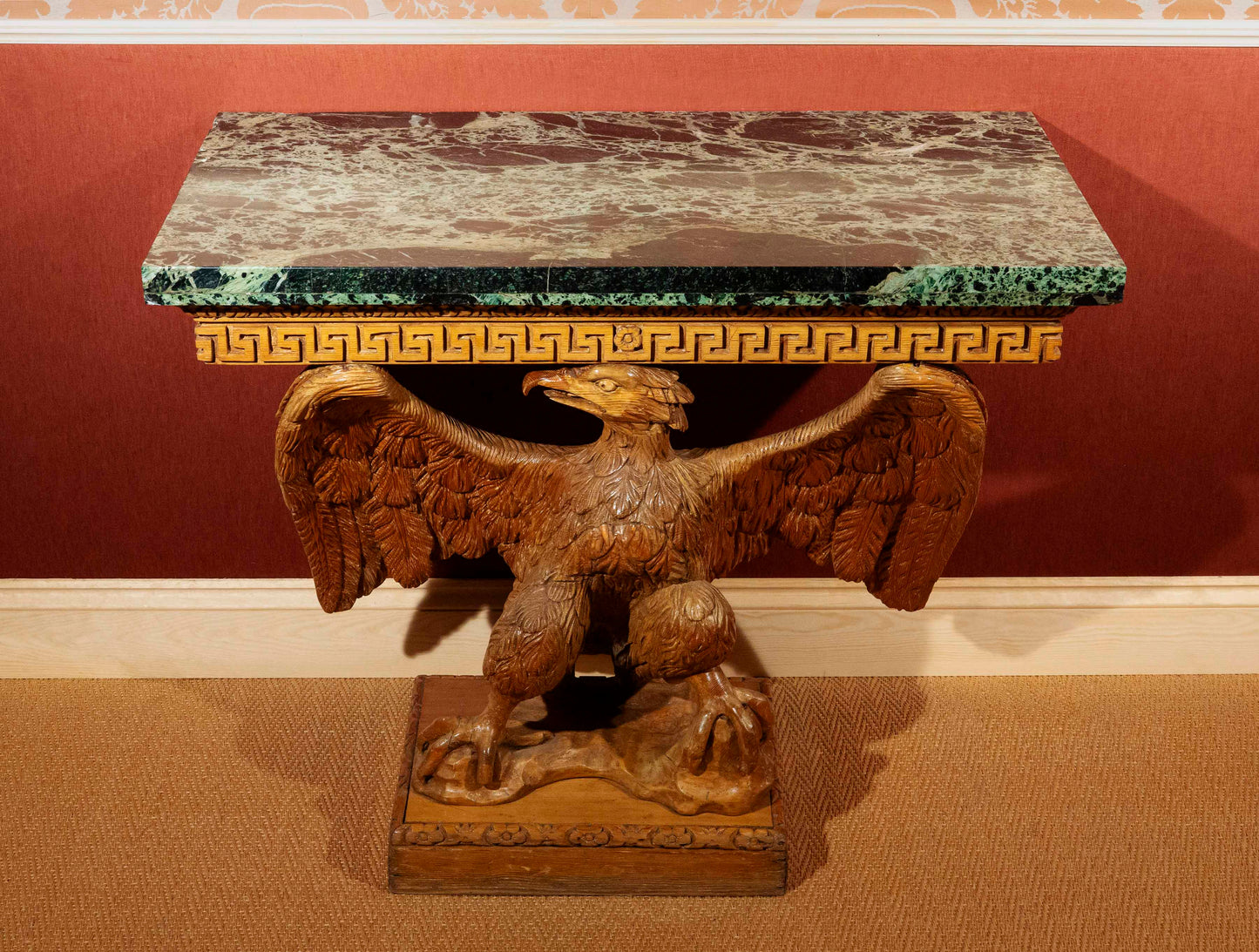
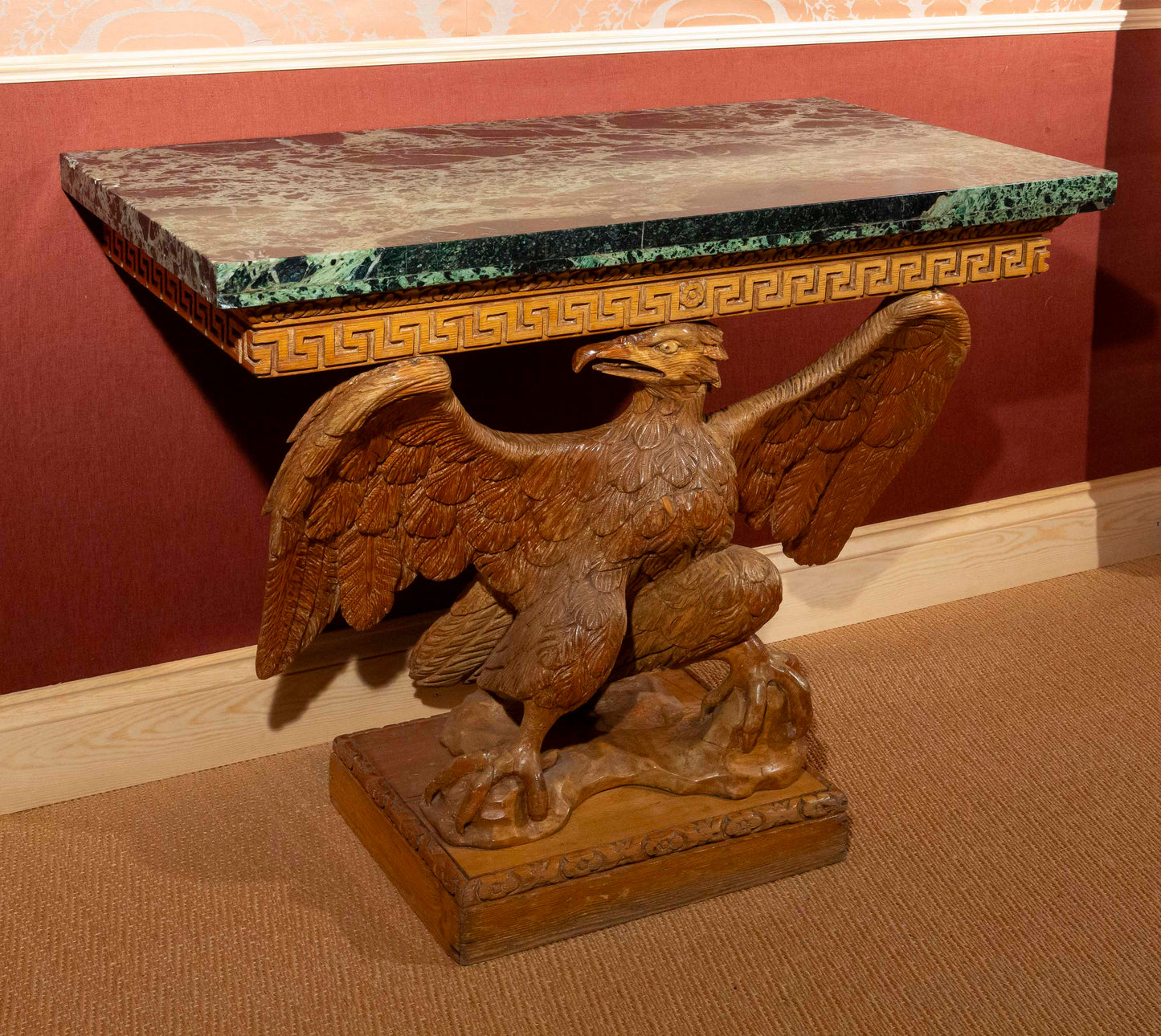
Rare early 18th century George II period console table with marble top. England or Scotland, circa 1740.
Why we like it
This remarkable eagle console table is a prime example of early Georgian design infused with classical symbolism often associated with English architect William Kent. Its centrepiece is a finely carved eagle, wings outstretched in a dynamic pose, supporting a polished green marble top. The beautifully carved Greek key pattern on the frieze beneath the marble is an archetypal Palladian motif symbolising order and eternity. The eagle — a potent emblem of power and divine authority — draws inspiration from Roman mythology, where it served as Jupiter’s companion and carried Ganymede to the heavens to serve as cup-bearer to the gods, a story recounted in Ovid’s Metamorphoses.
William Kent elevated furniture design to an architectural art form. Known for introducing the Palladian style to Britain, Kent frequently employed classical Roman iconography in his works, notably incorporating Roman eagle into his work, such as in his illustrations for Alexander Pope’s 1725 translation of Homer’s Odyssey.
Such console tables served as focal point and often used to display silver or porcelain. Their design balanced opulence with a reverence for antiquity, demonstrating the 18th century’s preoccupation with aligning modern craftsmanship with the ideals of classical civilisation.
Dimensions
Height: 31 in / 79 cm
Width: 40 in / 102 cm
Depth: 21.5 in / 55 cm











